When you choose to enhance your outdoor space with a gazebo, safety should be a guiding principle. From serene gardens to lively backyards, gazebos are havens of relaxation and social interaction.
However, without adhering to gazebo safety precautions, these structures can present numerous hazards. This guide delves into best practices to maintain your gazebo’s safety for years of enjoyment.
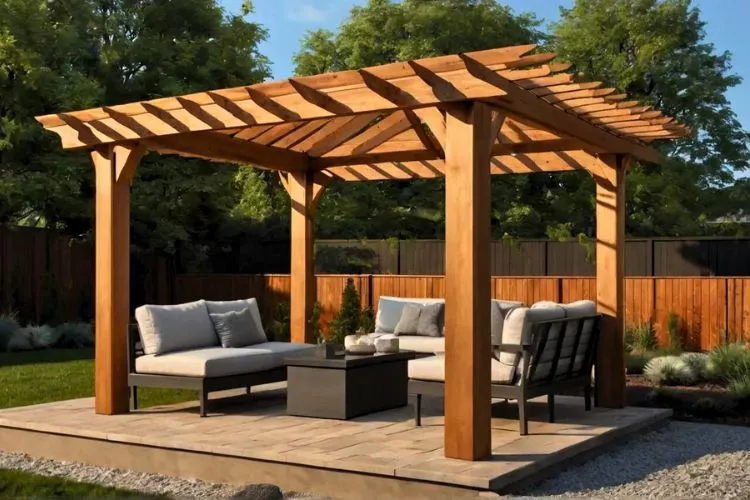
Contents
- 1 Gazebo Safety Precautions
- 2 Fire Safety Around Gazebos
- 3 Weatherproofing and Stability in Adverse Conditions
- 4 Electrical Safety and Lighting
- 5 Regular Maintenance and Inspection
- 6 Seasonal Care and Maintenance
- 7 Frequently Asked Questions (FAQs)
- 8 Pest Control for Your Gazebo
- 9 Dealing with Water Damage
- 10 Enhancing Accessibility and Safety
Gazebo Safety Precautions
The safety journey of a gazebo begins long before its first use; it starts with selecting the ideal location. It is crucial to position your gazebo at a safe distance from potential fire sources, like barbecues and fire pits.
This consideration prevents fire accidents and ensures the structure does not act as a fire conduit. Finding level ground is equally important.
A stable foundation prevents the gazebo from shifting or collapsing, which could lead to injuries. Uneven ground may cause pooling of water or structural instability, both of which can shorten the lifespan of your gazebo and pose safety risks.
Proper Installation Techniques
Once you have chosen an ideal spot, the focus shifts to installation. Anchoring your gazebo is a step you cannot overlook. Securing the structure to the ground combats the forces of wind and weather it will face over the years.
Depending on your gazebo type, strategies differ, but the core principle remains—fix it firmly to a strong base. Assuring the gazebo has sound structural integrity is next.
Regularly check the joints and connections, and immediately address any weaknesses. Attention to these details ensures your gazebo stands firm against the elements and time.
Fire Safety Around Gazebos
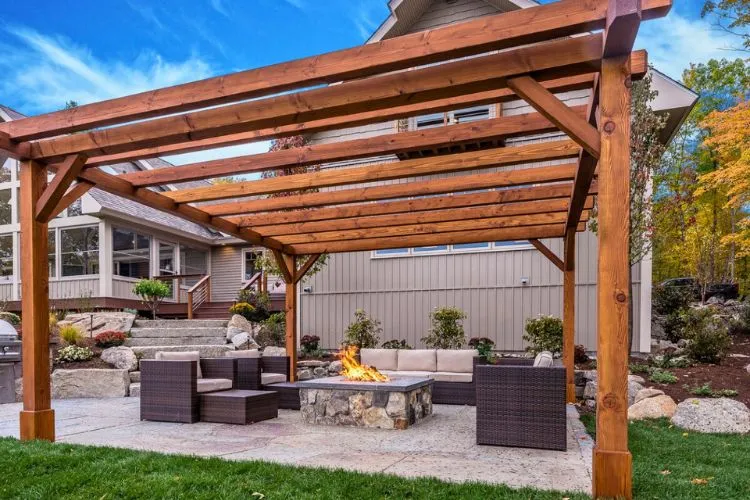
Avoiding Fire Hazards
The combination of fire and a gazebo can be beautiful yet dangerous. Taking preventative measures is key.
Ensure materials used in and around the gazebo are flame-retardant or non-flammable when possible. This can dramatically reduce the chances of accidental fires.
Beyond materials, it’s about spatial awareness. The gazebo must have enough clearance from grills and fireplaces. This buffer zone is your best defense against sparks and embers that could ignite a structure.
Alternatives to Open Flames Under Gazebos
Embracing safe lighting and heating options can mean the difference between safe gatherings and dangerous incidents.
Opt for electric heaters with automatic shutoff capabilities and LED lights. These alternatives to open flames let you extend the use of your gazebo into cooler evenings without the fire risk.
You may also read: Can You Put a Gazebo on Artificial Grass? | Are Gazebos Safe in Lightning?
Weatherproofing and Stability in Adverse Conditions
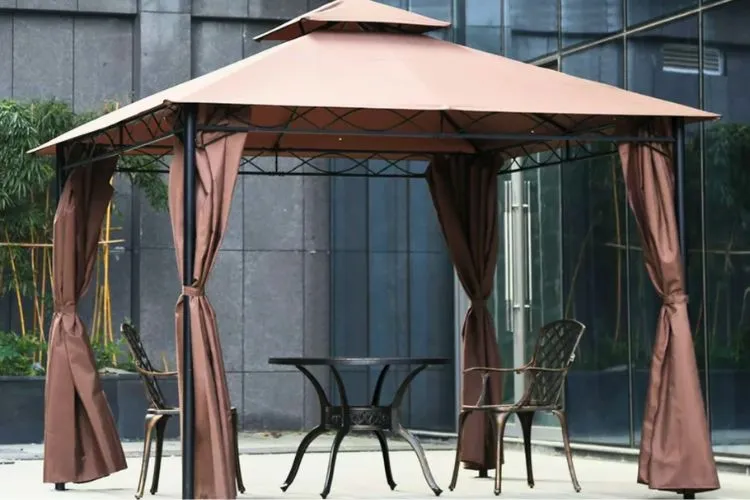
Preparing for Wind
Wind presents one of the most formidable challenges to gazebo safety. Enhance stability with weighted bases or tie-downs if your gazebo is a temporary structure. For permanent structures, solid anchoring into the ground or additional bracing might be necessary.
Knowing when to dismantle your gazebo in the face of severe weather is equally vital. No gazebo is entirely wind-proof. In anticipation of strong storms, it might be safest to take it down temporarily.
Lightning Safety Measures
Lightning is a less common, but still serious concern. Grounding your gazebo or installing lightning rods are topics of debate.
While they may offer protection, the best advice is to avoid taking shelter in a gazebo during a thunderstorm. No method guarantees complete safety from a lightning strike.
Electrical Safety and Lighting
When it comes to wiring your gazebo for electrical fixtures, safety comes first. It is recommended to hire a professional electrician to handle the installation.
Make sure all wiring complies with outdoor safety standards and uses protective coverings to shield against weather and wear. Lighting solutions in a gazebo setting need careful consideration too.
Opt for outdoor-rated fixtures. These are designed to handle the varying conditions of the outdoors while reducing the risk of electrical hazards.
Regular Maintenance and Inspection
Consistent maintenance is vital for extending the life of your gazebo and preventing accidents. Routinely inspect the structure for signs of damage, such as cracks, rust, or rot.
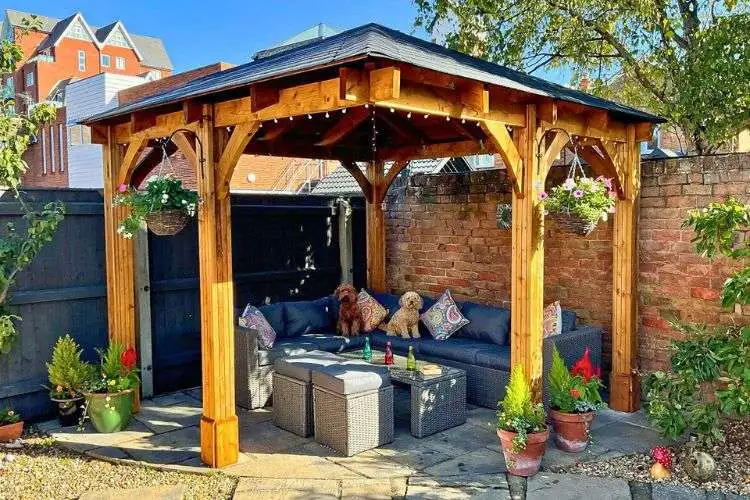
Addressing these issues early often means a straightforward fix instead of a major overhaul or replacement. Keep an eye out for wear and tear in your gazebo’s fabric parts as well, if applicable.
Torn canopies or screens not only look unsightly but can provide less protection from the elements and diminish the overall stability of the gazebo.
Seasonal Care and Maintenance
Winter arrives with its own set of challenges for outdoor structures. To safeguard your gazebo during the cold months, winterizing is crucial. Begin by thoroughly cleaning the structure, removing any debris that could hold moisture and cause damage.
Next, inspect and repair damages to the roof and foundations to prevent water and snow infiltration. It’s essential to ensure that the gazebo can withstand the weight of snow; hence, check for structural integrity.
Covering the gazebo with a weather-resistant tarp can offer extra protection against the elements. Come spring, a comprehensive inspection is equally important.
Examine your gazebo for any signs of wear from winter’s rigor—look for water damage, weakened joints, or pest infestations—and promptly address them.
Regular maintenance following each season’s specific demands guarantees that your gazebo remains a charming and safe retreat year-round.
Frequently Asked Questions (FAQs)
Can you put a fire pit under a gazebo safely?
While it is technically possible to place a fire pit under a gazebo, it is not advised due to the high risk of fire. If you do decide to proceed, ensure there is substantial ventilation, the gazebo materials are fire-resistant, and there is adequate clearance above and around the fire pit. Nonetheless, alternative heat sources are recommended.
How do you secure a gazebo from the wind?
To secure a gazebo in windy conditions, use anchors appropriate for your gazebo’s material and the ground it rests upon. Metal stakes, weighted bases, or tie-down straps are common options. In extreme weather, consider disassembling the gazebo to avoid damage.
What are the best materials for a fire-resistant gazebo?
Materials such as metal, treated wood, or heavy-duty synthetic fabrics that are labeled as fire-retardant offer the best protection in fire-resistant gazebo construction.
Is it safe to install a gazebo close to a swimming pool?
Yes, it is generally safe to install a gazebo close to a pool, providing additional relaxation space. However, consider potential slip hazards, proximity to water splashes that could damage certain materials over time, and ensuring electrical fixtures are safely distanced and insulated from the water.
Pest Control for Your Gazebo
Pests can be a nuisance and can even damage your gazebo if not addressed promptly. Here are some tips for keeping your gazebo pest-free:
Regular Cleaning: Ensure that your gazebo is kept clean and free of food crumbs or spilled beverages that could attract insects and other pests. Regularly sweep and mop the flooring, and wipe down any surfaces.
Sealing Gaps: Inspect your gazebo for any gaps or openings where pests might enter. Seal these openings with caulk or weather stripping to prevent unwanted guests from getting in.
Using Natural Repellents: Natural repellents like citronella candles, essential oils (such as eucalyptus or lavender), and garlic spray can help deter pests without the use of harsh chemicals.
Installing Screens: Consider adding screens to the sides of your gazebo to create a barrier against flying insects. This will allow you to enjoy the fresh air without being bothered by bugs.
Landscaping Considerations: Keep the area around your gazebo well-maintained. Trim back any overhanging branches and keep the grass short to reduce hiding spots for pests.
Dealing with Water Damage
Water damage can compromise the structural integrity of your gazebo. Here’s how to protect it from moisture:
Waterproofing: Apply a waterproof sealant to wooden gazebos to protect them from rain and humidity. This should be done annually or as recommended by the sealant manufacturer.
Proper Drainage: Ensure that your gazebo has proper drainage to prevent water from pooling around the base. Installing gutters and downspouts can help direct water away from the structure.
Roof Maintenance: Regularly inspect the roof for leaks or damage. Repair any holes or cracks promptly to prevent water from seeping in.
Using a Ground Cover: Placing a ground cover such as gravel or pavers around the base of the gazebo can help reduce moisture buildup and prevent water damage.
Enhancing Accessibility and Safety
Making your gazebo accessible and safe for everyone ensures that it can be enjoyed by all:
Ramps and Handrails: If your gazebo is elevated, consider adding ramps and handrails to make it accessible for people with mobility issues. Ensure that these features are sturdy and meet accessibility standards.
Non-Slip Surfaces: Use non-slip mats or treatments on the floor of your gazebo to prevent slips and falls, especially in damp conditions.
Adequate Lighting: Proper lighting enhances safety, especially during the evening or night. Solar-powered lights, LED string lights, and motion-activated lights are great options for illuminating your gazebo.
Clear Pathways: Keep the pathways leading to and from your gazebo clear of obstacles. This will reduce the risk of tripping and ensure that the gazebo is easily accessible.
First Aid Kit: Keep a basic first aid kit within easy reach. This should include bandages, antiseptics, and other essentials to handle minor injuries that may occur.
Conclusion:
Your gazebo should be a source of pleasure, not concern. By taking proper safety measures, from site selection to routine maintenance, you can enjoy your outdoor sanctuary with peace of mind.
Remember, a proactive approach to safety can significantly enhance the longevity and enjoyment of your gazebo.
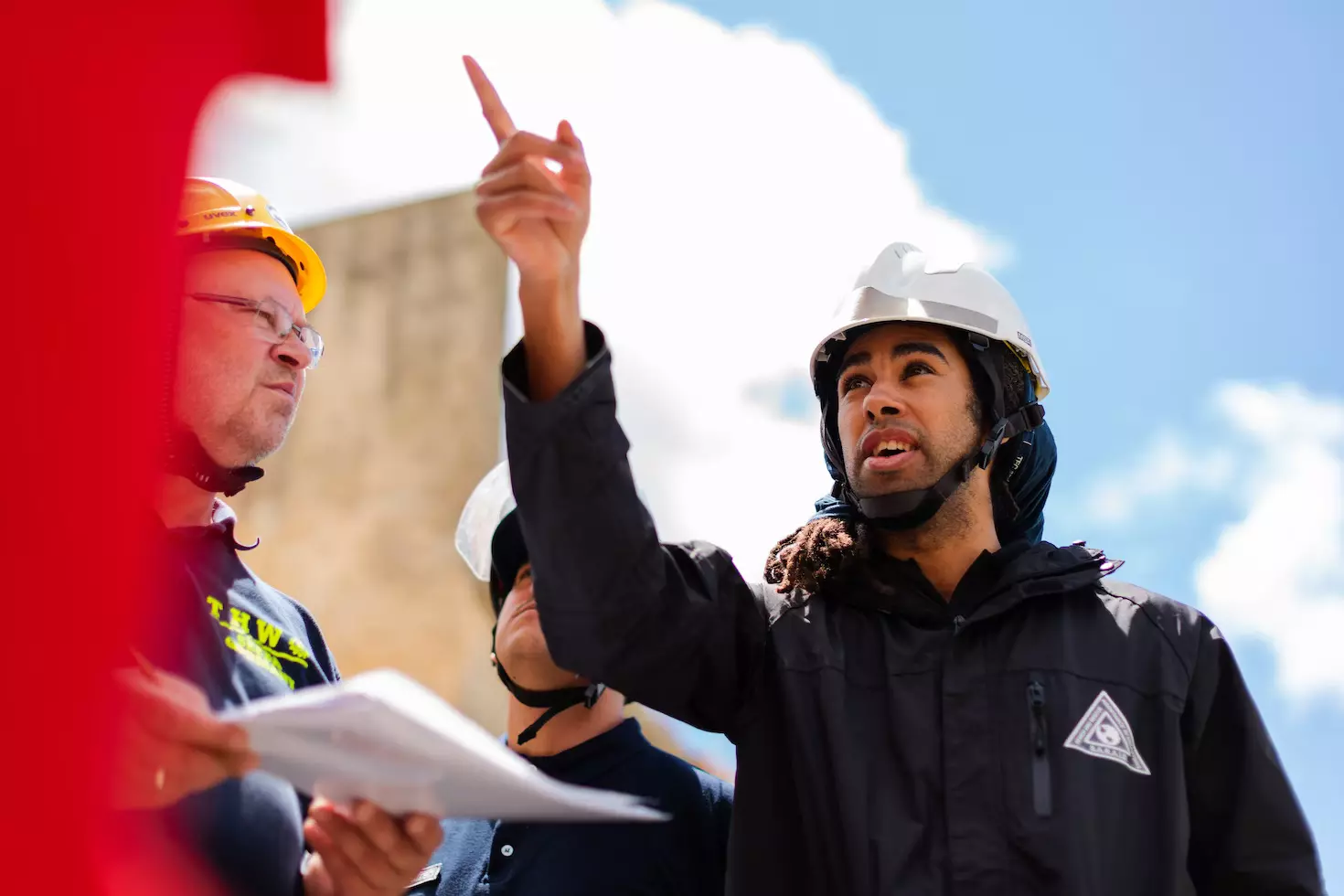
Sergio Gomes, a passionate advocate for outdoor living and the male voice behind Shades Authority. With years of experience, Sergio is your trusted source for expert insights on gazebos, pavilions, cabanas, pergolas, and all things outdoor shade solutions. Join him on a journey to transform your outdoor spaces into stunning, functional retreats
